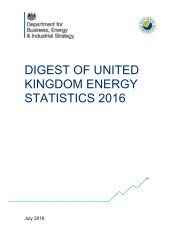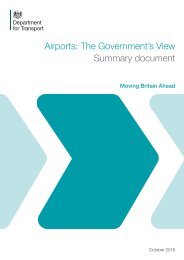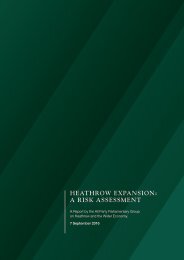20131211-2013.12Reports
20131211-2013.12Reports
20131211-2013.12Reports
Create successful ePaper yourself
Turn your PDF publications into a flip-book with our unique Google optimized e-Paper software.
PART B: SUMMARY OF THE BOARD'S DISCUSSIONS<br />
Information available included reports from the pilots of both ac, transcripts of the relevant RT<br />
frequencies, radar photographs/video recordings and a report from the appropriate ATC authority.<br />
Members first considered the pilots’ actions. The RJ1H pilot was operating under IFR in Class D<br />
airspace within the London/City CTA; the DR400 pilot was operating under VFR in Class G airspace<br />
below the London/City CTA. Both were operating in compliance with their respective clearances,<br />
were in 2-way RT contact with different controllers and each was passed Traffic Information on the<br />
other aircraft. The RJ1H pilot stated that he saw the DR400 indicate on TCAS and then saw it<br />
visually, presumably after he was cued by the TCAS display. The DR400 pilot was visual with the<br />
subject RJ1H (as noted from the Heathrow RAD transcript) and commented in his narrative about not<br />
seeing any conflicting aircraft. Members noted that the RJ1H pilot had received a TCAS RA ‘Monitor<br />
Vertical Speed’ as he was levelling off at his cleared altitude of 2000ft, which required him not to<br />
descend.<br />
Turning to the controllers, the 2 aircraft had been coordinated with 500ft separation and the required<br />
clearances had been issued. The controllers were required to give traffic information between IFR<br />
and VFR traffic, which they did.<br />
The Board then discussed in detail the issue of TCAS RAs in mixed IFR/SVFR/VFR circumstances,<br />
including at the boundaries of controlled and uncontrolled airspace. The discussion also considered<br />
the assumption by some that an RA was, by definition, an Airprox. Some members were of the<br />
opinion that an RA should be considered contextually, especially as TCAS is not optimised for the<br />
CTR environment. Broadly speaking, RAs could be considered in 2 classes, those that caused the<br />
aircraft to deviate from its planned flight path, either through manual or automatic intervention<br />
(manoeuvre RAs), and those that did not (monitor RAs). In the former case, e.g. ‘Climb Climb’, it<br />
could reasonably be assumed that the system was changing aircraft flight paths in order to prevent<br />
collision or, at the very least, close proximity. In the latter, it could be argued that the aircraft were<br />
always going to pass well clear of each other and that the system was simply advising the pilot to<br />
remain on the selected flight path in order to maintain already safe separation. It was noted that<br />
TCAS II Version 7.1 defines the ‘Monitor Vertical Speed’ RA as a ‘Preventive RA’, i.e. the RA is<br />
preventing collision by maintaining an already safe separation. The Board recognised that there were<br />
many facets to TCAS design, that their broad definition could not cover all cases, and that the pilot’s<br />
primary and only concern was to follow the instructions generated by the RA, whatever they were.<br />
However, the generation of an RA did not necessarily imply that an Airprox had occurred; it was felt<br />
that the considerations above could usefully be used by pilots when subsequently considering the<br />
level of risk in their event, and whether an Airprox report was justified.<br />
Considering the cause and risk for this Airprox, the Board felt that normal procedures, safety<br />
standards and parameters had pertained. However, notwithstanding the Board’s discussion and<br />
findings, it was also felt that it was highly undesirable for pilots of TCAS equipped aircraft to receive<br />
TCAS RAs of any kind, and that their occurrence should never be considered normal. Considering<br />
the circumstances of this and similar occurrences covered in other Airprox reports 3 , the Board agreed<br />
to recommend that the CAA review VFR/SVFR traffic procedures within CAS with respect to<br />
interaction with TCAS equipped aircraft and, specifically, RA occurrences.<br />
3 e.g. 2013099 and 2013121.







